Places to Visit
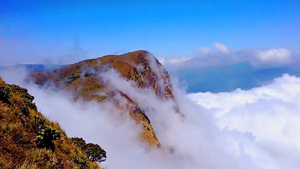
Meesapulimala
Meesapulimala is the second highest peak in the Western Ghats on the Indian subcontinent after Anamudi in Idukki District Kerala. Its peak is 2,640 metres (8,661 ft) above sea level.
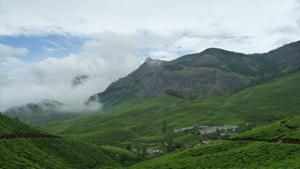
Kolukkumalai
Kolukkumalai is about 38 km from Munnar. The hill top is accessible only by jeep and offers superb views of the distant plains below in the neighbouring state of Tamil Nadu. The distant hills slipping in and out of the mist is a captivating sight. Kolukkumalai is also home to what many consider the highest tea plantations in the world. The tea grown here has a special flavour and freshness, thanks to the high altitude. Go on a guided tour through the two-storied tea factor. Built in the 1930s, with wooden interiors and aroma of tea processes tea in the traditional method different from the more popular CTC (crush-tear-curl method). Tea lovers will be pleased to sip different varieties of tea from the tea tasting centre here. Those wanting to take home the flavour, can buy fresh packets from the outlet attached to the factory.
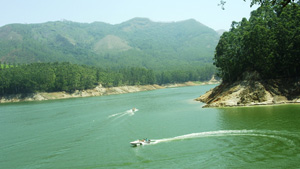
Mattupetty Dam/Lake
Mattupetty located 13 km from Munnar is situated at a height of 1700 m and is a delight for nature lovers. Mattupetty offers many fascinating sights to relish. Besides the lush green tea plantations, and the rolling grasslands, the Shola forests in and around Mattupetty are ideal for trekking and habitat to a fascinating variety of birds. One of the main attractions in Mattupetty is the beautiful lake formed by the reservoir of the Mattupetty Dam, which are ideal picnic spots. Speed launches and motor boats are available on hire.
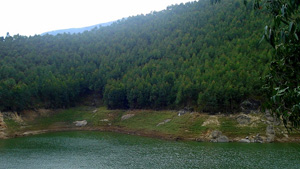
Echo point
This scenic place gets its name from the natural echo phenomenon here. Echo Point is on the way to Top Station from Munnar.

Kundale Dam /Lake
Kundale Dam offer one of the most spectacular views in Munnar. The dam has an artificial reservoir and boating facilities for tourists. The surrounding areas are carpeted with lush green tea estates. A narrow path above the dam is a vantage point to take in the scenery. For golfing enthusiasts the course here is picturesque.

Top Station
The highest point on the Munnar-Kodaikanal road. Travellers to Munnar make it a point to visit Top Station to enjoy the spectacular panoramic view it offers of the plains below in the neighbouring state of Tamil Nadu. It is also one of the spots in Munnar to view the blooming of vast stretches of 'Neelakurinji' flowers once every twelve years.
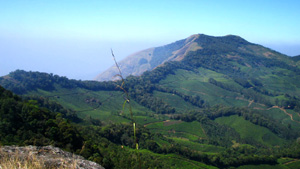
Pothamedu View Point
Pothamedu offers beautiful views of tea, coffee and cardamom plantations. The area is ideal for trekking and long mountain walks.
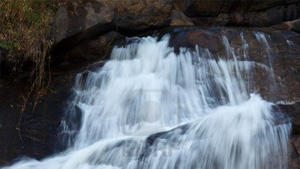
Lakkam Waterfalls
A great spot for photography, the waterfalls drop near the Vagavurai Estate, on the way to Marayoor from Munnar amidst wilderness. The adjoining Vagavurai valley is named due to the abundance of 'Vaga' trees. When the trees are in full bloom the whole of Vagavurai valley is seen covered in bright red.
Attukadu Waterfalls
A scenic waterfall and a feast for the senses set amidst hills and jungles between Munnar and Pallivasal. The area is renowned for its scenic views, sparkling waterfalls and rolling hills. Attukadu is also an ideal point to embark on long treks and hikes.
Lockhart Gap
The Lockhart Gap is an ideal place for adventure sport and trekking. The fresh mountain air, mist-clad hills and panoramic views make it worth a visit.
Anayirangal Dam
Surrounded by undulating slopes of lush tea plantations and evergreen forests, a trip to the reservoir is an unforgettable experience.
Powerhouse Waterfalls
A silver cascade down a steep rock slope, the surroundings offer a splendid view of mountains of the Western Ghats.
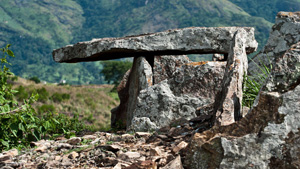
Marayoor
This is the only place in Kerala where sandalwood trees grow naturally. The sandalwood factory of the Forest Department and the children's park spread across a hectare of land under the canopy of a single Banyan tree are of great interest to tourists. The Thoovanam waterfalls and Rajiv Gandhi National Park are also nearby. Set on the slopes of the Western Ghat, the caves here with pre historic murals, Dolmenoid burial chambers, paintings and relics from the New Stone Age civilization also make Marayoor an important pre-historic site in Kerala.
Kanthalloor
A horticulturists paradisw, at 5000 ft above sea level, Kanthalloor provides the climate for the natural farming of fruits like apple, which are not commonly cultivated elsewhere in Kerala. Along with apples, guava, gooseberry, orange, eggfruits, peach, passion fruit etc are also cultivated here. Vegetables and spices like cauliflower, cabbage, carrot, beans, potato, and garlic grow here aplenty.
Mannavan Chola
A trek to Mannavanchola going past rare beautiful species of orchids is an adventure. From the watch tower here one can enjoy spectacular scenic views of the blue of the deep forests of Kanthalloor, Marayoor, the Chinnar Wildlife Sanctuary and Amaravathy lake.
Amaravathi Crocodile Farm
The largest wild breeding population of crocodiles in South India, the broad-snouted Mugger Crocodiles, also known as Marsh Crocodiles and Persian Crocodiles, are the most common and widespread of the three species of crocodiles found in India. The mugger crocodile, once abundant in Amaravathy, Periyar and Chinnar rivers have been threatened to near extinction.
Wildlife Sanctuaries
Guests may opt to visit many of the wildlife parks in the area filled with a fascinating variety of flora and fauna. TnU conducts both day and night safaris to these parks. These protected areas are especially known for several threatened and endemic species including the nilagiri thar, the grizzled giant squirrel, the nilagiri wood pigeon, elephants, gaur, the nilagiri langur and sambar deer.

The Periyar Wildlife Sanctuary
Periyar National Park is a sanctuary famous for its dense evergreen, semi-evergreen, moist deciduous forests and savanna grass lands. The park is home to herds of elephants, sambar deer, tigers, gaur, lion-tailed macaques and nilagiri langurs. The most attractive feature of Periyar is the herds of wild elephants that gather around the artificial lake formed by the Mullaiperiyar Dam across the Periyar River. The Thekkady region around the park is a heaven for natural spices such as black pepper, cardamom, cinnamon and clove.
Kurinjimala Sanctuary
The sanctuary ensures the long-term protection of the unique biodiversity of the area, especially Strobilanthes Kunthiana (the Nilakurinji flower) and its habitat around Kottakamboor and Vattavada villages.
Eravikulam National Park
The park accommodates almost half of the world's population of a rare species of mountain goat named the Nilagiri Thar. The highest peak in South India, Anaimudi (2695m) is located in the southern part of the park is an ideal spot for trekking. The Anamalai sub-cluster, including all of Eravikulam National Park, is under consideration by the UNESCO as a World Heritage Site.
Annaimudi Shola National Park
This is a protected area composed of Mannavan, Idiyara and Pullardi Shola forests.The Anamudi Shola National Park provides valuable contiguous wildlife habitat connectivity to the other wildlife parks that surround this protected area. This national park forms part of the Anamalai sub-cluster, which was recently nominated for consideration for World Heritage Site status under UNESCO's World Heritage Programme.
Pampadum Shola National Park
The smallest national park in Kerala adjoins the Allinagaram Reserved Forest within the proposed Palani Hills Wildlife Sanctuary and protects a moderate amount of montane evergreen shola forest. The evergreen trees and the water sources are the habitat of various birds and animals. The keystone species here is the highly elusive and endangered, endemic small carnivore the nilagiri marten. Leopards and Indian wild dogs are sometimes sighted at dusk and dawn. Substantial numbers of tigers also live in the park. Species of birds found here include the nilagiri wood pigeon, white bellied short wing, scaly breasted lorikeet, blue rock thrush, blue capped rock thrush, nilagiri flycatcher, black and orange flycatchers. Studies have been made on various rare medicinal plants in the park and the unique richness of uncontaminated 'humus'.
Chinar Wildlife Sanctuary
The Chinnar Wildlife Sanctuary is located in the rain shadow region of Western Ghats and is home to a large number of plants and animals. Due to the significant variation in altitude and rainfall, Chinnar has a wide array of habitat types like deciduous forests, dry thorn scrub, riparian forests, shoals and grassland containing about 1000 species of flowering plants and a repository of medicinal plants. The sanctuary has recorded the largest number of reptilian fauna in Kerala including the mugger crocodile. With 225 recorded species of birds, it is one of the richest areas of south India in avian diversity. The riverine forests support a healthy population of the endangered grizzled giant squirrel, the pride of Chinnar. The famous and extremely rare white bison has been recently reported. Other important mammals found are elephant, tiger, leopard, guar, sambhar, spotted deer, nilagiri thar, common langur, bonnet macaque. The phenomenon of butterfly migration occurs in the period between the monsoons. A watchtower in the sanctuary offers an unbelievably beautiful view of the sanctuary- vast expanses of green forests extending to the nearby state of Tamil Nadu and far away mountains. The sanctuary, a trekker's paradise, is situated about 60 km away from Munnar. Two groups of tribes, Muthuvans and Hill Pulayas, inhabit the sanctuary in 11 hamlets or 'Kudies'. The sanctuary provides livelihood options for the tribes and helps in maintaining their cultural heritage. Archeologically significant megalithic burial sites consisting of dolmens and cysts are found near some settlements. With the launching of the eco development program, successful efforts have been made for evolving a model of biodiversity conservation in a human dominated landscape.
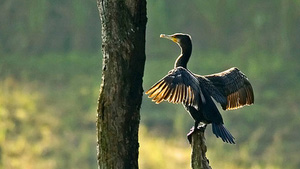
Thattekkad Bird Sanctuary
The Thattekkad Bird Sanctuary is a birder's paradise with over 140 species including 11 endemics having been spotted over a visit. The vegetation in the sanctuary best for birding consists of tropical evergreen forest, though the evergreen vegetation can also make spotting difficult. Elevations around Thattekkad are over 1500 meters lower than in Munnar, the local temperatures are higher and birds became more active. The vegetation changes in this area over relatively short distances and with slight changes in elevation. The sanctuary also contains a large marsh where whiskered tern, bronze-winged jacana and noisy flocks of lesser whistling ducks can be spotted. In the dry season, many of the trees drop their leaves, making it relatively easy to spot the birds. Cuckoos and drongos are the most common species encountered besides green bee-eaters, blue-tailed bee-eaters, mottled wood and Asian darters, little cormorants, shirka, Blyth's pipit, ashy wood swallow, common iora, black-hooded oriole, greater racket-tailed drongo, black drongo, bronze drongo, rufus treepie, grey-bellied cuckoo, greater coucal, common hawk cuckoo, Asian koel, yellow-billed babbler, thick-billed warbler, lesser yellow nape, Rufus woodpecker, brown-capped pygmy woodpecker, and streak-throated woodpecker, the Malabar grey hornbill and the white-bellied blue flycatcher. Other species often spotted include: collared scops owl, Indian cuckoo, greater flameback, jungle owlet, Malabar woodshrike, crested serpent eagle, rusty-tailed flycatcher, blue-throated flycatcher, brown-breasted flycatcher, orange-headed thrush, black-naped oriole, eurasian golden oriole, large cuckooshirke, white-rumped needle tail, flame-throated bulbul, heart-spotted woodpecker, small minivet, rose-winged parakeet, Asian paradise-flycatcher and the pale-billed flower pecker, India's smallest bird.

